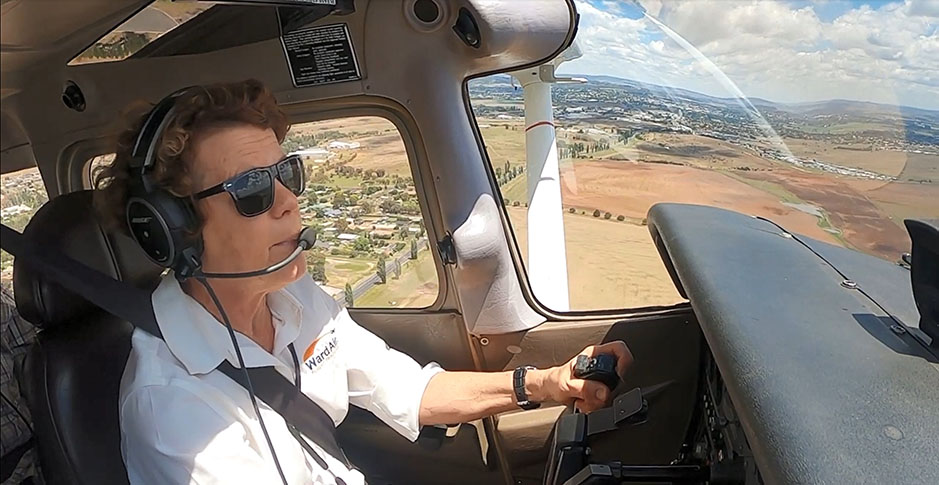Controllers consistently emphasise the importance of correct phraseology and accurate readbacks – and for good reason. In high-workload environments, a single miscommunication can quickly escalate into a serious incident.
This article looks at the key role standardised phraseology and precise readbacks play in keeping skies safe, drawing on insights from an experienced air traffic controller and a defence instructor.
Why is phraseology and readback accuracy so important?
Phil Vabre, a recently retired air traffic controller (ATC) with over 32 years’ experience, highlights why precision matters.
‘Standard phraseology is the oil that greases the wheels of the airways,’ he says.
‘Air traffic controllers work with pilots of all nationalities and levels of experience, and pilots face the same challenge from the other side. Standard phraseology means that when we communicate, we all know what information to expect from each other, and in what order. That limits the possibilities for misunderstandings and thereby contributes significantly to safety.
‘Standard phraseology also makes the systems – air traffic and flying – much more efficient by limiting irrelevant verbiage and reducing uncertainty.
‘Similarly, readbacks are an essential means of confirming that we all have a common understanding of what’s been communicated. Once again, this limits the possibility of misunderstanding, making the system safer and more efficient.’
RAAF flying instructor and aviation performance coach Storm Fenech also stresses the value of clear communication.
‘Having standardised phraseology means we’re not reinventing the wheel in situations where safety and critical decision-making is taking place,’ he says.
‘In an operational environment, there is a large amount of information being delivered to pilots. Having standardised phraseology allows pilots to easily recognise communication that is pertinent to them.
‘Standardised phraseology avoids confusion – we train the same way we would fly in an operational environment, so it feels almost normal.’
Practical tips for better radio communication
‘Practice makes perfect!’ says Fenech.
‘Communication is something that can be prepared for and ‘chair flown’ like any other airborne sequence. Before I make a radio call I’m unfamiliar with, I rehearse it either on the ground or in the air.’
‘Having standardised communication is also an easy way to be more effective on the radio,’ he continues.
‘I often call my local ATC to clarify procedures and comms if there’s any kind of confusion or I can’t find a solution in the resources available to me.’
Pilots can improve their communication by being prepared and knowing what to say and when. Vabre offers the following tips:
- Anticipate what ATC might tell you or need to know from you – and be ready for it.
- Listen carefully. Don’t guess. If unclear, ask ATC to ‘say again’ or ’say again slowly’.
- Know the required readbacks and provide them.
- Speak clearly and at a moderate pace.
- Don’t skip or shorten callsigns, keywords such as ‘heading’ or ‘flight level’, or any of the other elements of the standard phrases – they are there for a reason.
- If no standard phrase exists, use plain English.
- Understand when to use ‘request’ and when to escalate to ‘require’ – but don’t abuse it.
- Speak up early if you have any kind of problem. It’s easier to solve small problems than big ones.
- Listen out for your callsign and respond if called.
- Avoid distractions during critical flight phases when ATC may need to speak with you.
‘Air traffic controllers necessarily begin from the assumption that pilots know how things work in their particular neck of the woods. However, that may not be the case for any number of reasons, such as unfamiliarity with an aerodrome or airspace, experience level, language difficultly and so on.
‘If you need ‘special consideration’, let ATC know what you require in plain language. ATC can usually accommodate you if they’re aware of the need – and the more notice the better.
‘Finally, if you don’t understand something, or you think the air traffic controller has got the wrong end of the stick, then say so right away – don’t just blunder on in the hope that all will be revealed in due course. It is a team effort after all.’
Mastering clear, standardised communication not only boosts safety – it helps pilots and controllers work together more efficiently. When everyone uses consistent language and confirms shared understanding, it reduces confusion, supports better decision-making and contributes to a safer, more predictable flying environment.
By preparing, listening carefully, using standard phraseology and speaking up when something’s unclear, pilots play a key role in keeping everyone on the same frequency – literally and figuratively.
Resources for flying in controlled airspace
Controlled aerodromes and operations are a focus of CASA’s Your safety is in your hands campaign. For more guidance, tools and tips, be sure to visit the pilot safety hub.





